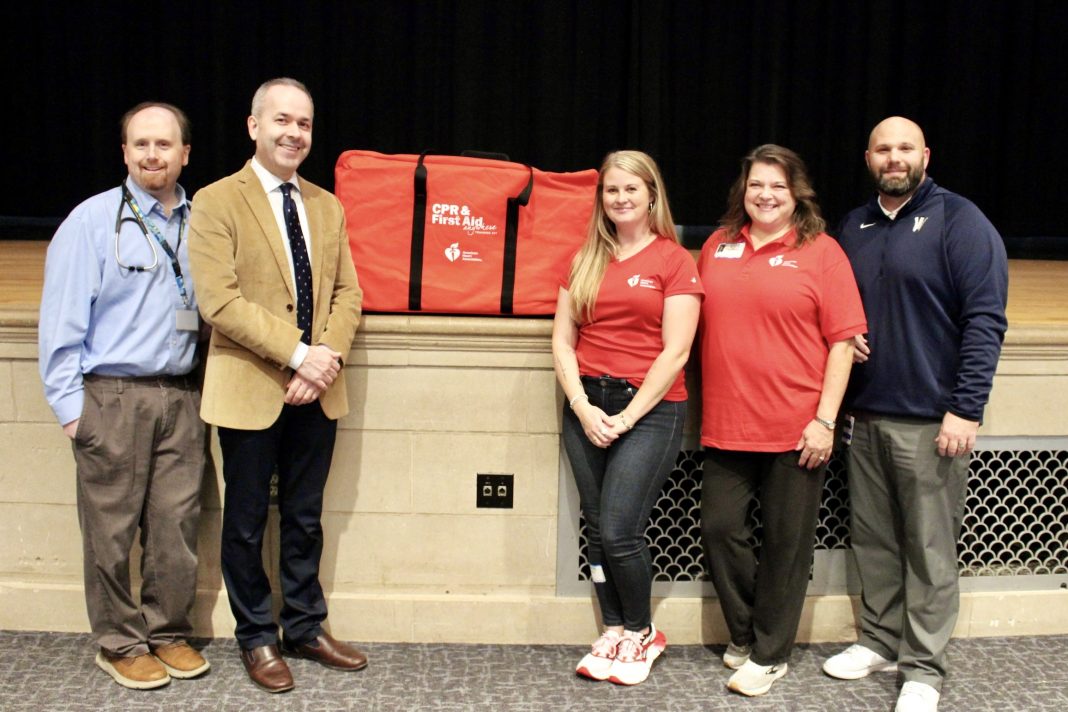CPR, especially if performed immediately, could double or triple a cardiac arrest victim’s chance of survival. However, 70% of respondents in a recent consumer survey said they were not confident they would respond with CPR in a cardiac emergency. With the goal of changing this statistic, the American Heart Association, the worldwide leader in resuscitation science and education, and Penn State Health recently held a Hands-Only CPR experience at Wyomissing Area Junior-Senior High School, providing more than 300 students with the knowledge and confidence to save a life during a cardiac emergency using Hands-Only CPR.
The event kicked off with an assembly led by Dr. John Breinholt, pediatric cardiologist at Golisano Children’s Hospital at Penn State Health Milton S. Hershey Medical Center, who explained the difference between a heart attack and cardiac arrest and introduced the steps of Hands-Only CPR. Volunteer instructors from the American Heart Association, Penn State Health and the school took the lessons from the assembly back to the classroom, giving each student the opportunity to practice the new skills.
“Teaching CPR to high school students is crucial because it empowers them with the skills to save lives,” said Dr. Breinholt. “In emergency situations, every second counts, and having more individuals who feel confident to perform CPR increases the chances of survival for those experiencing cardiac arrest. By equipping young people with this knowledge, we create a community of first responders who can make a significant difference.”
The school also received three of the American Heart Association’s CPR & First Aid Anywhere Training Kits, which contains everything needed to facilitate CPR, AED and first aid training for hundreds of learners including video-based instruction, inflatable practice manikins and an AED training simulator. The kits were provided as part of Penn State Health Golisano Children’s Hospital’s sponsorship of the American Heart Association’s Kids Heart Challenge initiatives in the region.
“Giving schools the ability to train their students in this important life-saving skill will have an impact that reaches far beyond the school’s campus,” said Molly Emrich, school engagement director for the American Heart Association. “Training today’s youth can add thousands of new lifesavers to our communities and help the American Heart Association realize our goal of doubling cardiac arrest survival by 2030.”
The goal of the American Heart Association’s Nation of Lifesavers initiative is to turn bystanders into lifesavers, so that in the time of cardiac emergency anyone, anywhere is prepared and empowered to become a vital link in the chain of survival and provide CPR. Every year in the United States, there are more than 23,000 youth who experience a cardiac emergency outside of a hospital and almost 40 percent of those are sports-related.
Quick, simple and easy-to-learn, Hands-Only CPR has been shown to be as effective in the first few minutes as conventional CPR for cardiac arrest at home, at work or in public.
For more information about CPR training, visit cpr.heart.org.


